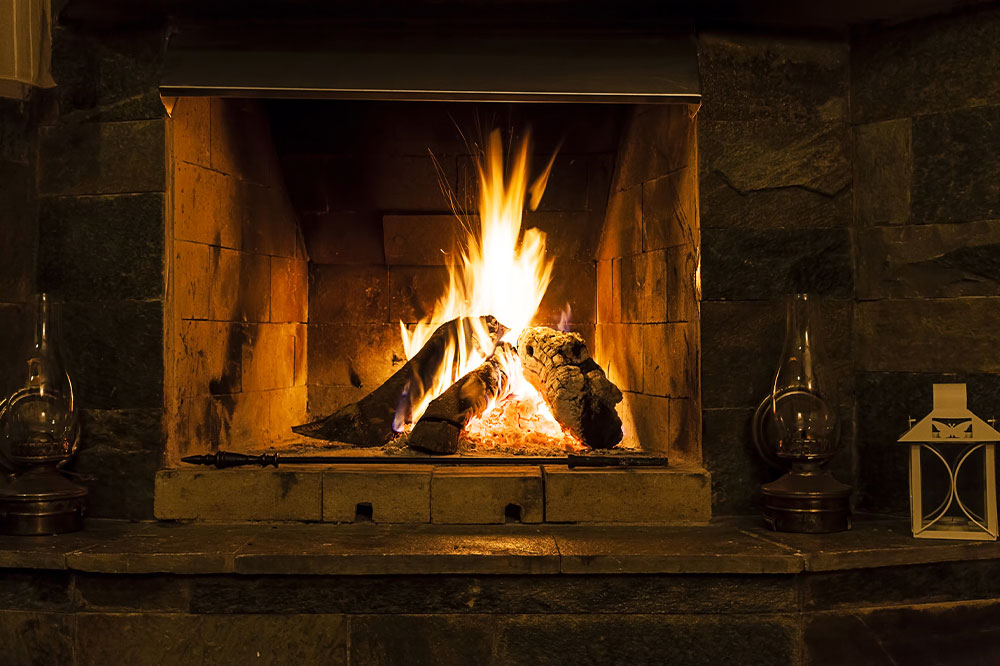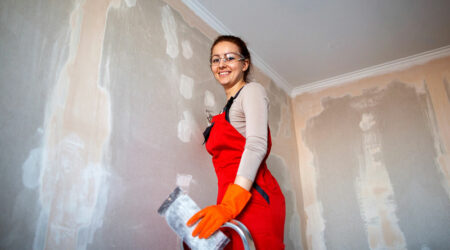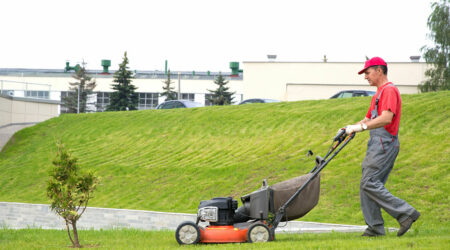
A detailed guide to fireplaces
As the colder months approach, homeowners start considering adding a fireplace to their homes. Fireplaces provide warmth, create a cozy ambiance, and add esthetic value to your living space. However, choosing the right type of fireplace can be challenging, especially if you are unfamiliar with the options available. In this guide, we will help you through the different types of fireplaces, their benefits and drawbacks, and factors to consider when choosing the right one for your home.
Types of fireplaces
Wood burning fireplaces
Wood burning fireplaces are a traditional type of fireplace that have been used for centuries. They are typically constructed with brick or stone and require a chimney for ventilation. Wood-burning fireplaces can use either seasoned or green wood as fuel, producing a lot of heat and a pleasant crackling sound.
Gas fireplaces
Gas fireplaces are becoming increasingly popular among homeowners due to their convenience and energy efficiency. The gas fireplaces use natural gas or propane as fuel and can be vented or ventless. Vented gas fireplaces require a chimney or a venting system to expel the combustion products. In contrast, ventless gas fireplaces use a catalytic converter to clean the exhaust gases and release them back into the room.
Electric fireplaces
Electric fireplaces are the most versatile type of fireplace, as they can be installed anywhere in your home, even in apartments or condos without chimneys. They use electricity to create the illusion of a real fire, using LED lights and an electric heater to produce heat. Electric fireplaces are easy to install, require no maintenance, and are highly energy-efficient.
Fireplace construction
Fireplaces can be masonry or prefabricated, each with advantages and disadvantages.
Masonry fireplaces
Masonry fireplaces are built on-site using bricks, stones, or concrete blocks and require a skilled mason to construct. They are highly durable and can last for decades with proper maintenance. Masonry fireplaces also provide excellent insulation, retaining heat and preventing drafts.
Prefabricated fireplaces
Prefabricated fireplaces are factory-built and can be installed in a matter of hours. They are made of metal or other non-combustible materials and are designed to be highly energy-efficient. Prefabricated fireplaces also come in various styles and designs, allowing you to choose one that fits your home décor.
Fireplace tools and accessories
Here are some of the most common fireplace tools and accessories:
Fireplace screen
A fireplace screen is a defensive barrier that prevents sparks and embers from escaping the fireplace and potentially causing a fire.
Fireplace grate
A fireplace grate is an elevated platform that holds the logs and allows air to circulate them, improving combustion and reducing smoke.
Fireplace tool set
A fireplace tool set includes a poker, tongs, shovel, and brush, which are used to tend the fire, move the logs, and clean the fireplace.
Blower
A blower is a device that can be attached to some fireplaces, such as wood stoves, to increase efficiency by circulating warm air throughout the room.
Chimney brush
A chimney brush is used to clean the chimney and remove any creosote buildup, reducing the risk of chimney fires.
Wood stove accessories
When choosing a wood-burning fireplace or stove, consider additional accessories to improve its efficiency and safety.
Blowers
A blower is an accessory that can be attached to a wood stove to increase efficiency by circulating warm air throughout the room. Blowers can be manual or automatic and can significantly reduce your heating costs by maximizing the heat output of your wood stove.
Screens
A screen is a protective barrier that can be placed in front of a wood stove to prevent sparks and embers from escaping and potentially causing a fire.
Grates
A grate is an elevated platform that holds the logs and allows air to circulate them, improving combustion and reducing smoke. Grates can also make it easier to tend the fire and remove ash and debris.
Wood stove maintenance
Wood stoves require regular cleaning and maintenance to operate safely and efficiently. Here are some tips for maintaining your wood stove:
Clean the chimney
Chimneys should be well-cleaned once a year to prevent creosote buildup and reduce the risk of chimney fires.
Clean the wood stove
Wood stoves should be cleaned regularly to remove ash and debris that can clog the air vents and reduce efficiency.
Use dry wood
Wet or green wood can produce more smoke and creosote than seasoned wood, reducing the efficiency of your wood stove and increasing the risk of chimney fires.
Use proper fuel
Do not use paper, cardboard, or other flammable materials as fuel for your wood stove, as they can cause a fire.
Use a screen
Always use a protective screen before your wood stove to prevent sparks and embers from escaping.




